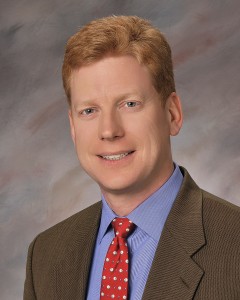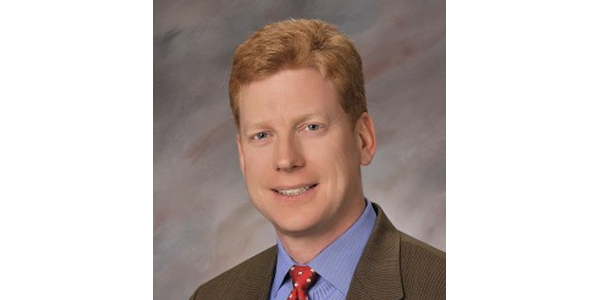 Daniel Schildge is the president of CRP Industries Inc., the parent company of CRP Automotive. He was appointed to the position in July 2008, after serving in a variety of capacities with the company, including chief operating officer. Schildge is directly responsible for the strategic and tactical management of CRP Industries and accountable for the development and implementation of the company’s infrastructure, including all systems, processes and personnel. He was recently elected to the Executive Leadership Council of the Import Vehicle Community, a segment of the Auto Care Association. Schildge is a graduate of Harvard University’s Owner/President Management Program and holds an Master of Engineering degree in aerospace engineering and a Bachelor of Science degree in mechanical engineering from Cornell University. A former U.S. Naval Officer, Schildge served as a submarine officer on the USS Columbus.
Daniel Schildge is the president of CRP Industries Inc., the parent company of CRP Automotive. He was appointed to the position in July 2008, after serving in a variety of capacities with the company, including chief operating officer. Schildge is directly responsible for the strategic and tactical management of CRP Industries and accountable for the development and implementation of the company’s infrastructure, including all systems, processes and personnel. He was recently elected to the Executive Leadership Council of the Import Vehicle Community, a segment of the Auto Care Association. Schildge is a graduate of Harvard University’s Owner/President Management Program and holds an Master of Engineering degree in aerospace engineering and a Bachelor of Science degree in mechanical engineering from Cornell University. A former U.S. Naval Officer, Schildge served as a submarine officer on the USS Columbus.
In this exclusive interview, Schildge brings us up to speed on the integration of the AAE brand into CRP, as well as his new role within the Import Vehicle Community.
It has been roughly two years now since CRP Industries acquired Atlantic Automotive Engineering (AAE) and merged it into the CRP Automotive brand. What strengths and benefits does the AAE line bring to CRP’s product portfolio?
The AAE acquisition has proven to be both a natural and a very strategic fit for CRP. The AAE program covers a robust offering of hydraulic power steering (HPS) parts for Asian and European makes, and this has provided us with a product line category that is both synergistic with our existing products and in keeping with our focus of delivering parts for import vehicles.
The AAE business also has helped to evolve CRP product management thinking into the remanufacturing space. Looking beyond just replacement parts, we are looking at integrating multiple components into a package so we can deliver overall solutions to the market.
Establishing remanufacturing as one of our core competencies is key to CRP’s long-term vision. Today’s automobiles have many more electro-mechanical systems on them. When these parts fail, they are typically very expensive to replace, and that makes them ideal candidates for remanufacturing. This is very evident in the Electronic Power Steering (EPS) category, where vehicle manufacturers are now offering their own remanufactured replacement parts to offset costs and counter the trend toward pre-mature car retirement related to cost of ownership issues. We see a huge market need and thus a great opportunity for us remanufacturing EPS.
CRP’s purpose is to build a sustainable community where people and machines perform at their best. The AAE brand is playing a significant role in bringing this purpose to life.
What changes and investments have you had to make to level the AAE legacy business up to CRP’s standards?
Fortunately, AAE’s commitment to quality has always been strong, similar to all of our CRP programs. Their product offerings aligned well with our existing brands, as did application coverage from a make/model point of view.
Initially, we saw an opportunity to leverage the scale we have across supply chain, operations and product management, marketing and sales teams by integrating AAE into the CRP Automotive brand portfolio. We’ve been consistently addressing these areas for improvement on many fronts, from shifting the ERP system to data management processes to quality systems to manufacturing strategy.
We’ve also executed a three-pronged approach around strategy, people and processes. From a strategic point of view, we are fully committed to expanding our program of hydraulic power steering (HPS) parts while leading the way in remanufacturing EPS. To support this direction, we’ve incorporated system capabilities and processes, which allow us to deliver the highest-quality product. And these processes can only operate well if you have the right people in the right seats. We’ve added resources in many areas to support these changes.
I understand that CRP has taken a unique approach to retooling AAE’s remanufacturing capabilities. What can you tell us about this?
You could say we’ve raised AAE’s reman operations to the next level. We’ve taken substantial steps to increase the production capabilities and overall capacity at our remanufacturing plant, incorporating lean manufacturing processes, software, automation and RFID traceability while upgrading management, R&D and engineering personnel and assets. The facility boasts a completely new product floor layout with automated quality testing cells, cleaning stations and painting booth.
We’ve made these investments to ensure we are positioned to meet the demands of our customers while allowing the flexibility required to meet the ever-changing needs of the market. We are well poised for future growth.
You were recently elected to the Executive Leadership Council of the Import Vehicle Community, a segment of the Auto Care Association. This undoubtedly gives you a bird’s eye view of what’s ahead for the aftermarket as a whole. From a broader perspective, what are some of the key issues you see that aftermarket companies in your segment need to stay focused on right now?
One of the most significant things that I have learned since I have been on the Import Vehicle Community’s Executive Leadership Council is the pressing need to engage our government. Conducting government affairs is the most important thing that the Auto Care Association does. It is critical that we, as an industry, speak to our government with a strong, united voice.
The biggest issue that I see right now is the attempt by automakers to use the Digital Millennium Copyright Act (DMCA) as a way to eliminate competition from the independent aftermarket. Automakers are embedding software in more and more of the parts and components they install on the vehicles they build. They claim that this software is protected by DMCA and as a result are looking to prevent both remanufacture and production of aftermarket versions of these parts and components. We need the government to affirm that the DMCA does not prevent access to the embedded software used throughout the vehicles. This is as big an issue as the Right to Repair.
Over the past few months, I have met with my Representative and with staff members from other New Jersey Representatives and Senators to discuss this issue. It is surprisingly easy to be heard. I highly encourage other automotive aftermarket executives to take the time to engage politically. Our industry provides consumers with excellent and affordable choices and also employs a lot of people. We need to fight to protect it.
Outside of all of the investments CRP has made in the AAE brand, can you give us an update on what’s new with other brands in your product portfolio? What can we expect from CRP in 2018?
We are really excited about the expansion of our Rein Automotive brand into Asian parts coverage for power steering hoses, both high-pressure and low-pressure. Combined with our extensive European coverage, this makes for a very strong OE-quality hose program.
Our Rein Automotive master cooling system focus continues to expand with new water pumps, expansion tanks, coolant hoses and thermostats. The program is built around a comprehensive line of OE-quality replacement parts that have been developed to solve a variety of cooling system service issues. We are creating a number of solution-driven repair kits based on strong input from our Innovation Council members. We continue to identify unique opportunities to help make repair jobs easy for the professional repair tech.
For the Pentosin technical fluids brand, one can expect to see the addition of a number of new transmission fluids and motor oils in 2018. These fluids are for late-model applications, keeping our Pentosin program up-to-date with the right application oriented technical fluids. We’ve also added a number of transmission fluid service kits for Audi, BMW and VW along with Power Steering Reservoir service kits for BMW, Mini and Mercedes Benz. Again, we are identifying problem solving repair solutions designed to make it easy for the repair technician.
We drive product innovation largely through our direct connection to professional repair technicians in our Innovation Council. We actively seek input on what parts are failing, what jobs are problematic and how we can help repair techs exceed their customers’ expectations with the parts we offer. Our product team is actively listening as part of our product development process, and insight that we gain from this group is invaluable to us and drives a significant amount of our product development.














